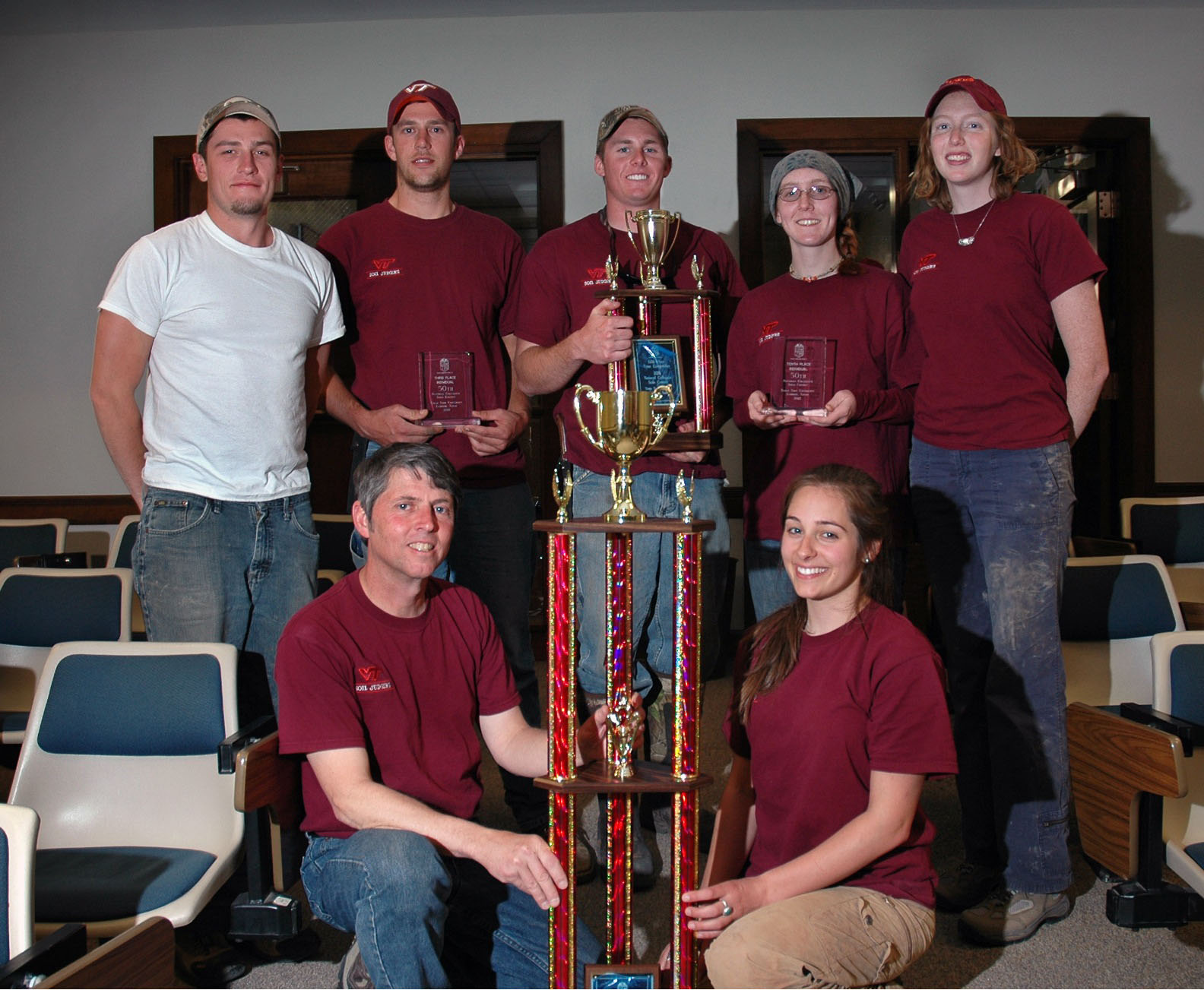Soil Judging Team wins 2010 American Society of Agronomy National Soil Judging Contest

The Virginia Tech Soil Judging Team in the College of Agriculture and Life Sciences won first place overall at the 50th American Society of Agronomy National Soil Judging Contest hosted by Texas Tech University in Lubbock, Texas, March 20-27.
This is the third national championship for Virginia Tech and the second since 2005.
Virginia Tech finished first overall out of 21 universities competing, followed by the University of Wisconsin-Platteville, University of Rhode Island, University of Maryland, and Northern Illinois University. This is the sixth consecutive national championship in which Virginia Tech has finished among the top four teams.
Virginia Tech’s team members were:
- William “Randy” Cosby of Glen Allen, Va., a junior majoring in crop and soil environmental sciences;
- James Currie of Toms Brook, Va., a junior majoring in environmental science;
- Dan Johnson of Castlewood, Va., a senior majoring in crop and soil environmental sciences;
- Nina O'Malley of Arlington, Va., a junior majoring in crop and soil environmental sciences;
- Heather Taylor of Bryans Road, Md., a senior double majoring in crop and soil environmental sciences and philosophy in the College of Liberal Arts and Human Sciences; and
- Katie Wooten of Orange, Va., a senior majoring in environmental science.
The Virginia Tech team received high marks in the individual event as well: Johnson placed third, Taylor placed 10th, Currie placed 14th, and Cosby placed 18th out of 84 competitors. The six students placed fifth in the team-judging event, which counts as 16 percent of the overall score.
Team coach John Galbraith, associate professor of crop and soil environmental sciences, explained that none of the Virginia Tech students had been west of the Mississippi prior to the trip.
“The students saw more flat farmland and circle pivots than they ever knew existed,” he said. “They also saw their first tumbleweeds, prairie dogs, sand storm, cacti, playa lakes, dunes, and desert badlands. The students described soils and agriculture unique to a semiarid environment on the high plains that they could not have seen anywhere within 1,500 miles of Virginia – a factor that makes their accomplishment very remarkable.”
During the competition, students enter multiple soil pits and have a limited amount of time to judge the soil’s color, texture, and structure. Their assessments are compared with those of professional soil scientists with years of experience. After graduation, students with soil judging experience often work with consultants, engineers, and environmental agencies or pursue graduate studies in their field based on their practical experience in describing, classifying, and rating soils.




